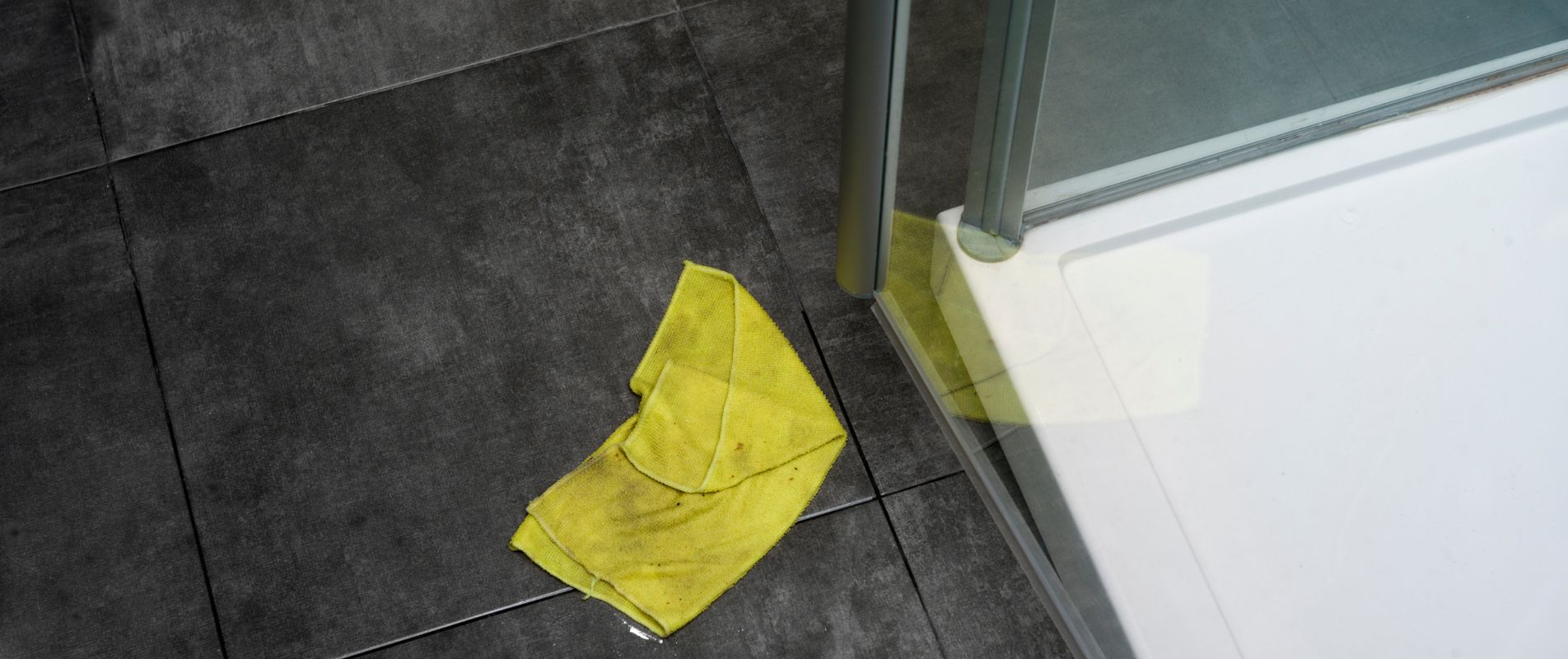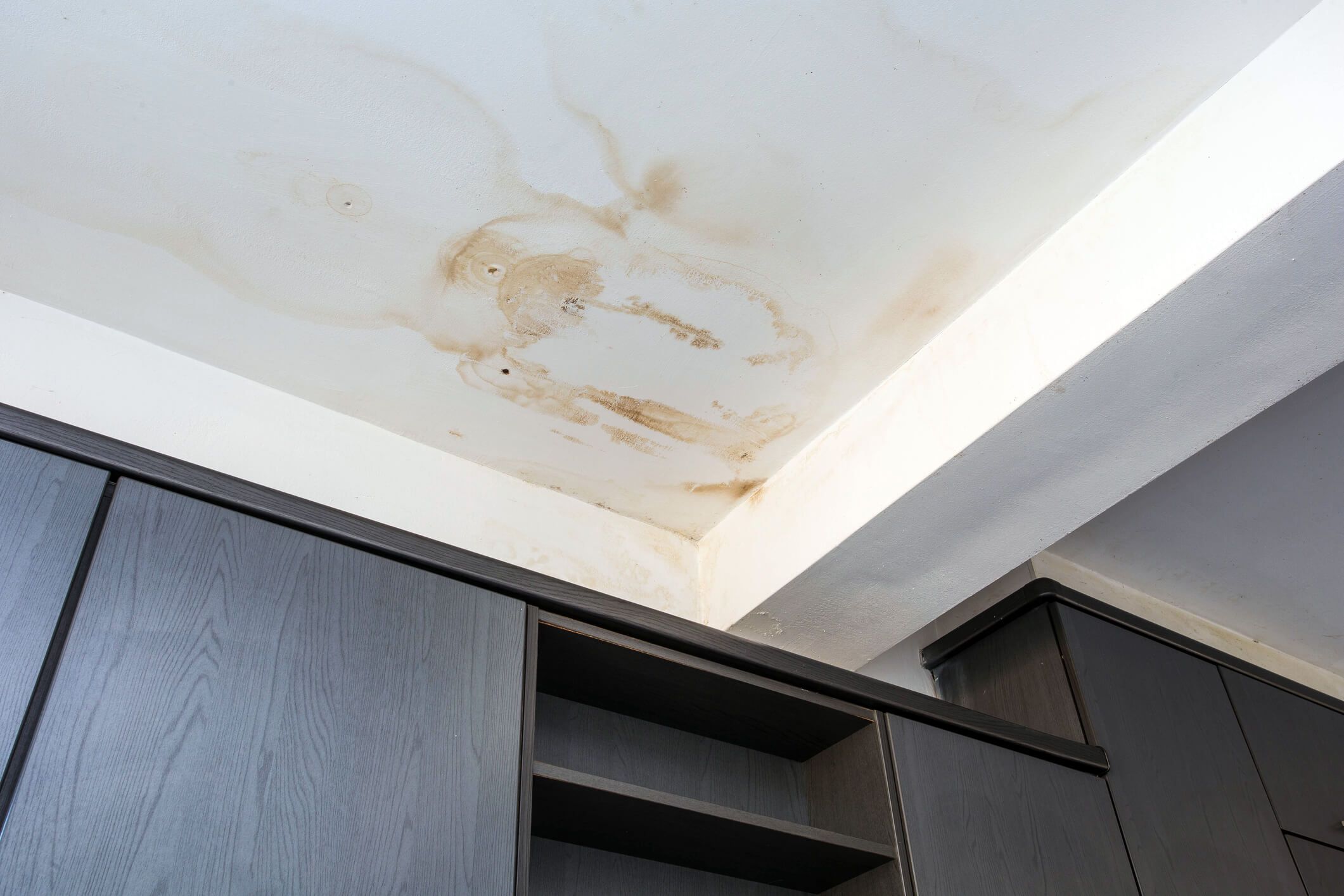Identifying the Source of the Leak

A leaky bathroom floor can be a major headache, causing damage to your home and potentially leading to mold growth. To effectively address the issue, it’s crucial to pinpoint the source of the leak.
Common Causes of Bathroom Floor Leaks, Leak in bathroom floor
Leaks in bathroom floors can stem from various sources, including plumbing fixtures, pipes, and water damage.
- Plumbing Fixtures: Faulty faucets, showerheads, or toilets can lead to leaks, often manifesting as slow drips or persistent leaks.
- Pipes: Leaky pipes, particularly older galvanized pipes, can contribute to bathroom floor leaks. Corrosion or cracks in pipes can cause water to seep out.
- Water Damage: Excessive water use, such as overflowing bathtubs or showers, can saturate the bathroom floor, leading to leaks.
Inspecting the Bathroom Floor
A thorough inspection is essential to pinpoint the source of the leak.
- Visual Inspection: Start by examining the bathroom floor for any visible signs of water damage, such as discoloration, warping, or peeling paint. Look for signs of water dripping from fixtures or pipes.
- Check Fixtures: Carefully inspect all plumbing fixtures, including faucets, showerheads, and toilets. Look for signs of leaks, such as dripping water, loose connections, or cracked components.
- Examine Pipes: If possible, access the pipes under the bathroom floor. Look for signs of corrosion, leaks, or cracks.
- Moisture Meter: A moisture meter is a handy tool for detecting hidden leaks. This device measures the moisture content of the floor, helping to identify areas with excessive moisture.
Differentiating Between Slow Leaks and Sudden Bursts
Understanding the nature of the leak can help guide your troubleshooting.
- Slow Leaks: Slow leaks often manifest as dampness or discoloration on the bathroom floor. They may be caused by dripping faucets, leaky pipes, or faulty fixtures.
- Sudden Bursts: Sudden bursts are characterized by a sudden gush of water, often accompanied by a loud noise. These leaks are typically caused by a ruptured pipe or a major failure in a plumbing fixture.
Assessing the Damage: Leak In Bathroom Floor

A bathroom floor leak can cause significant damage, affecting not only the floor itself but also the surrounding structures, potentially creating health hazards and impacting the overall integrity of your home. It is crucial to understand the potential consequences of a leak and how to assess the damage to determine the necessary repair steps.
Types of Damage
The severity of damage caused by a bathroom floor leak depends on several factors, including the duration of the leak, the materials involved, and the extent of water penetration.
- Structural Damage: Water can seep into the subfloor, weakening the structural integrity of the floor and potentially causing sagging or even collapse. This damage can be especially severe if the leak goes unnoticed for an extended period.
- Mold Growth: Dampness from a leak creates a breeding ground for mold, which can grow rapidly in warm, humid environments. Mold can cause respiratory problems, allergies, and other health issues, making it crucial to address mold growth promptly.
- Electrical Hazards: Water and electricity are a dangerous combination. A leak can damage electrical wiring, causing short circuits, shocks, and even fires. It is vital to disconnect electrical power to the affected area before attempting any repairs.
Factors Influencing Damage Severity
The duration and extent of the leak play a significant role in determining the severity of the damage.
- Duration of the Leak: A leak that persists for a long time will cause more damage than a leak that is quickly identified and addressed. For example, a leak that persists for several weeks can lead to extensive mold growth and structural damage, while a leak that is repaired within a few days might only require minor repairs.
- Materials Involved: The type of flooring material can influence the extent of the damage. For example, wood floors are more susceptible to water damage than tile floors.
- Extent of Water Penetration: The depth of water penetration into the subfloor and surrounding structures will also determine the severity of the damage.
Damage Assessment and Repair Costs
| Type of Damage | Repair Costs (Approximate) |
|---|---|
| Floor Replacement (Tile) | $500 – $2,000 |
| Floor Replacement (Wood) | $1,000 – $5,000 |
| Subfloor Repair | $500 – $2,000 |
| Mold Remediation | $500 – $5,000 |
| Electrical Repairs | $200 – $1,000 |
| Structural Repairs | $1,000 – $10,000+ |
Determining the Need for Professional Help
While some minor repairs can be handled by a homeowner with basic DIY skills, it is crucial to assess the extent of the damage and determine if professional help is required.
- Structural Damage: If you notice any sagging or unevenness in the floor, it is crucial to consult a structural engineer or contractor to assess the damage and recommend appropriate repairs.
- Extensive Mold Growth: If you see visible mold growth or suspect mold contamination, it is essential to contact a professional mold remediation company to address the issue safely and effectively.
- Electrical Hazards: If you suspect water damage to electrical wiring, immediately disconnect power to the affected area and contact a licensed electrician to inspect and repair the wiring.
Repairing the Leak

Once the source of the leak has been identified and the damage assessed, it’s time to repair the leak and restore your bathroom to its former glory. The repair process will depend on the nature of the leak and the extent of the damage. Here are some common repair methods:
Replacing Plumbing Fixtures
Replacing faulty plumbing fixtures is often necessary to stop leaks.
- Faulty Faucets: If the leak is coming from a faucet, it may be due to a worn-out washer, a broken cartridge, or a damaged O-ring. Replacing the faucet is often the most effective solution.
- Leaky Toilets: Toilets can leak from the tank, the bowl, or the flapper. Replacing the flapper, the fill valve, or the entire toilet may be necessary to stop the leak.
- Showerheads: If the leak is coming from the showerhead, it may be due to a worn-out gasket or a damaged showerhead. Replacing the showerhead can resolve the leak.
Leak in bathroom floor – Tools and Materials:
- Wrench
- Screwdriver
- Pliers
- New plumbing fixture (faucet, toilet, showerhead)
- Teflon tape (for sealing pipe threads)
Steps to Replace a Faucet:
- Turn off the water supply to the faucet.
- Unscrew the faucet handles and remove them.
- Use a wrench to loosen and remove the faucet body from the sink or countertop.
- Wrap Teflon tape around the threads of the new faucet body.
- Screw the new faucet body into the sink or countertop.
- Connect the water supply lines to the new faucet body.
- Turn on the water supply and check for leaks.
Sealing Pipes
Cracks or holes in pipes can cause leaks.
- Epoxy: Epoxy is a strong adhesive that can be used to seal cracks in pipes.
- Pipe Wrap: Pipe wrap is a flexible material that can be wrapped around pipes to seal leaks.
- Pipe Clamps: Pipe clamps are metal devices that can be used to secure pipe wrap or epoxy around pipes.
Tools and Materials:
- Epoxy or pipe wrap
- Pipe clamps (if using pipe wrap)
- Cleaning solvent (for cleaning the pipe surface before applying epoxy or pipe wrap)
Steps to Seal a Pipe with Epoxy:
- Turn off the water supply to the pipe.
- Clean the surface of the pipe with a cleaning solvent.
- Mix the epoxy according to the manufacturer’s instructions.
- Apply the epoxy to the crack in the pipe.
- Smooth the epoxy with a putty knife.
- Allow the epoxy to cure completely before turning the water supply back on.
Repairing Water Damage
Water damage can affect the subfloor, drywall, and other materials in your bathroom.
- Subfloor Repair: If the subfloor is damaged, it may need to be replaced or repaired.
- Drywall Repair: Damaged drywall may need to be replaced or repaired.
- Mold Removal: Mold can grow in damp areas, so it’s important to remove any mold that has formed as a result of the leak.
Tools and Materials:
- Screwdriver
- Hammer
- Saw
- Drywall screws
- Drywall compound
- Mold remover
- Personal protective equipment (gloves, mask, eye protection)
Steps to Repair Water-Damaged Drywall:
- Remove any damaged drywall.
- Cut a new piece of drywall to fit the opening.
- Secure the new drywall to the studs with drywall screws.
- Apply drywall compound to the seams and nail holes.
- Allow the drywall compound to dry completely.
- Sand the drywall compound smooth.
- Prime the drywall before painting.
Preventing Future Leaks
Regular maintenance and proper plumbing practices can help prevent future leaks.
- Inspect Plumbing Regularly: Check your plumbing fixtures for leaks and signs of wear and tear.
- Maintain Water Pressure: High water pressure can put stress on pipes and fixtures, increasing the risk of leaks.
- Use Water-Saving Fixtures: Water-saving fixtures, such as low-flow showerheads and toilets, can help reduce water usage and minimize the risk of leaks.
- Avoid Overtightening Fittings: Overtightening fittings can damage pipes and increase the risk of leaks.
- Winterize Your Plumbing: If you live in a cold climate, winterize your plumbing to prevent pipes from freezing and bursting.
